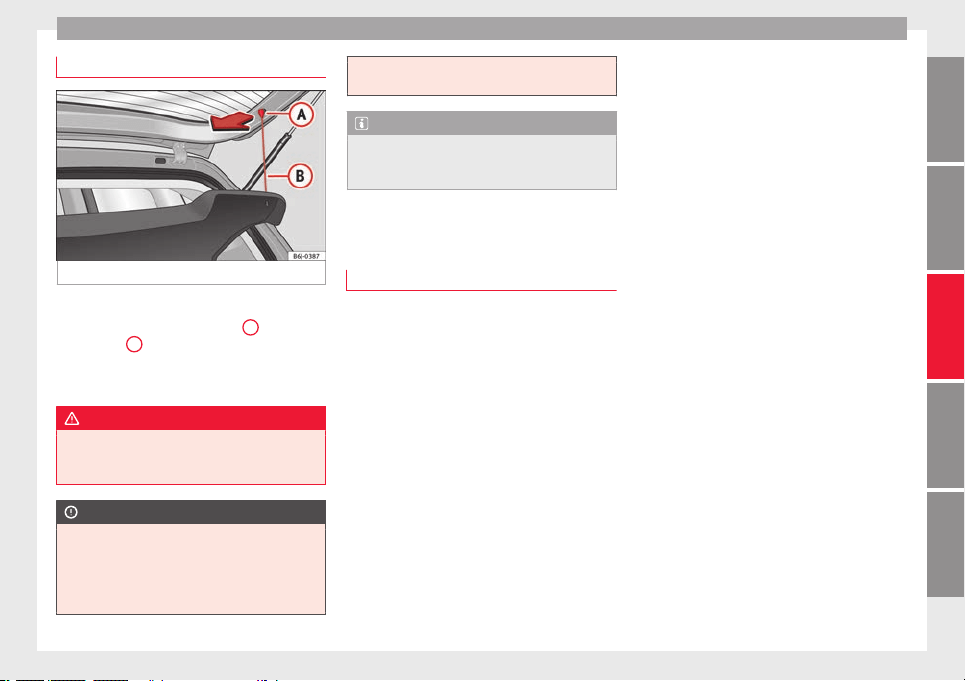Loading ...
Loading ...
Loading ...

Transport and practical equipment
Rear shelf
Fig. 149 Rear shelf.
Removing the shelf
–
Unhook the loops ›
›
›
Fig. 149
B
from
hou
s
in
gs
A
.
–
Extract the cover from its slot, in its rest po-
s
ition and p
u
ll outwards.
WARNING
Do not place heavy or hard objects on the
rear shelf
, because they will endanger the ve-
hicle occupants in case of sudden braking.
CAUTION
●
Befor
e closing the rear lid, ensure that the
rear shelf is correctly fitted.
●
An overloaded luggage compartment could
mean that the rear shelf is not correctly seat-
ed and it may be bent or damaged.
●
If the lugg
age compartment is overloaded,
remove the tray.
Note
●
En
sur
e that, when placing items of clothing
on the luggage compartment cover, rear visi-
bility is not reduced.
Roof rack/roof luggage rack*
Intr
oduction
Please observe the following points if you in-
t
end t
o c
arry loads on the roof:
●
For safety reasons, only luggage racks and
accessories supplied by SEAT Official Serv-
ices are recommended.
●
It is essential that you follow the assembly
instructions included with the bars exactly,
being especially careful to position front and
rear luggage compartment cover bars on the
special housings in the longitudinal bars.
You must also respect their position accord-
ing to the direction of travel indicated in the
assembly manual. Not following these in-
structions may damage the bodywork.
●
Pay special attention to the tightening tor-
que of the attachment bolts and check them
following a short journey. If necessary, re-
tighten the bolts and check them at regular
intervals.
●
Distribute the load evenly. A maximum load
of 40 kg is permitted for each roof rack sys-
tem support bar, the load must be distrib-
uted evenly along the entire length. However,
the maximum load permitted for the entire
roof (including the support system) of 75 kg
must not be exceeded nor the total weight
recommended for the entire vehicle. See the
“Technical Data” section.
●
When transporting heavy or large objects
on the roof, any change in the normal vehicle
behaviour due to a change in the centre of
gravity or an increased wind resistance must
be taken into account. For this reason, a suit-
able speed and driving style must be used.
●
On vehicles fitted with a sliding/tilting sun-
roof*, make sure it does not hit the load on
the roof upon opening.
135
Technical dataAdviceOperationEmergenciesSafety
Loading ...
Loading ...
Loading ...